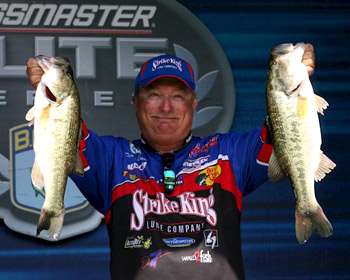
Anglers who are really serious about their sport give plenty of consideration to almost every variable they might encounter during a day's fishing. Anything from rod action to hook size comes under careful scrutiny.
But how much thought is devoted to the weight and size of slip sinkers? Not much, suggests Elite angler Denny Brauer, who argues that sinker size can be one of the most important factors of all.
"Most of the time, my weight selection has everything to do with the water's temperature," he explains. "When the water is cold, I want a slower falling bait because fish aren't going to be as active. "The same is true if the water's dirty — I want my bait to fall slower."
Conversely, he explains that if the water is warm and he's flipping, he will be focused on getting a reaction strike, which dictates a heavier weight. "When the water's warm, I want a bait with a quick fall so I can get that reaction bite," he explains. "I also might want it to fall faster in warm, clear water, where I don't want the bass to get a good look at the bait."
The Missouri pro points out that if the flipping bite is especially good, he may keep three or four rods rigged up with the same bait, but with sinkers of different weights, on his casting deck. "A lot of times it has nothing to do with the water temperature, but with the thickness of the cover I'm fishing," he explains.
"For instance, if I'm flipping grass, I might encounter grass mats in a variety of thickness in just a little stretch of bank." With that in mind, Brauer always tries to use the lightest sinker conditions permit. "The lighter the sinker, the better the odds are for getting a solid hook set," he points out.
"A sinker is really a bite detector, and it slows down the hook behind it. That's the beauty of tungsten sinkers. It's more dense than lead, so you can use a smaller diameter weight, which will give you a better hooking percentage."
Brauer says it's important to use equipment and tackle matched to the size of the weight you're using — particularly when flipping heavy cover. "When you're using those heavier slip sinkers, you need to gear up with a heavier action rod," he says. "Otherwise, you'll be 'tip-loaded' and won't be able to present the bait correctly.
"Secondly, you should be using heavier line in this situation. In fact, if I'm using a really heavy weight on my flipping bait, I'm most often going to be using braid."
When fishing heavy cover — particularly matted vegetation — Brauer emphasizes the importance of using the weight for its intended purpose — to get the lure into the bass' strike zone, wherever that is. Anything heavier than necessary lessens the effectiveness of the lure.
"Generally speaking, regardless of the mat you're fishing, it's just a canopy," he says. "You have to be mindful of the fact that the weight's only purpose is punching through the canopy. You want to use the lightest weight that you can get by with.
"In other words, if you can punch through with an ounce, why use an ounce-and-a-half?"
(Provided by Z3 Media)




